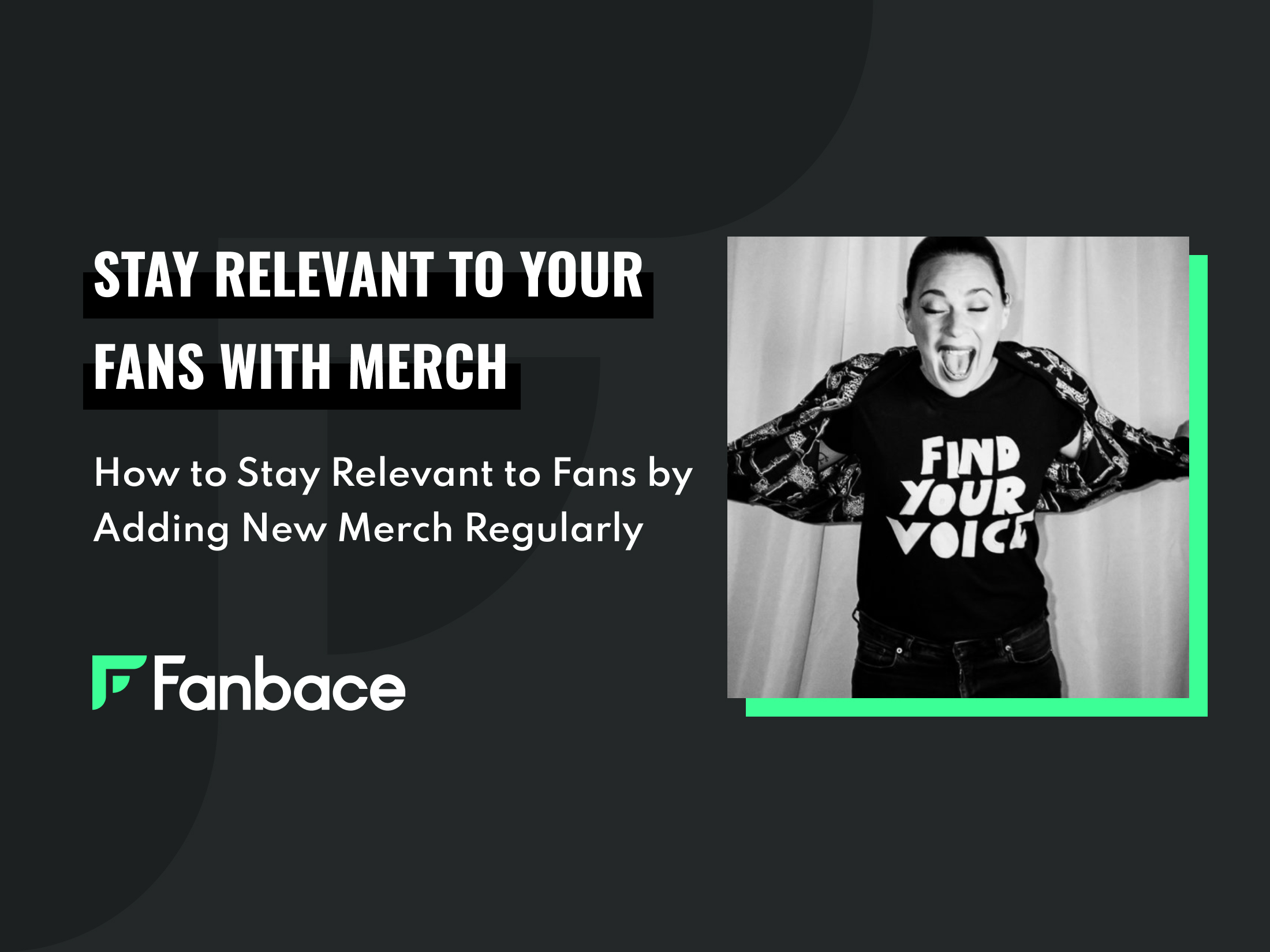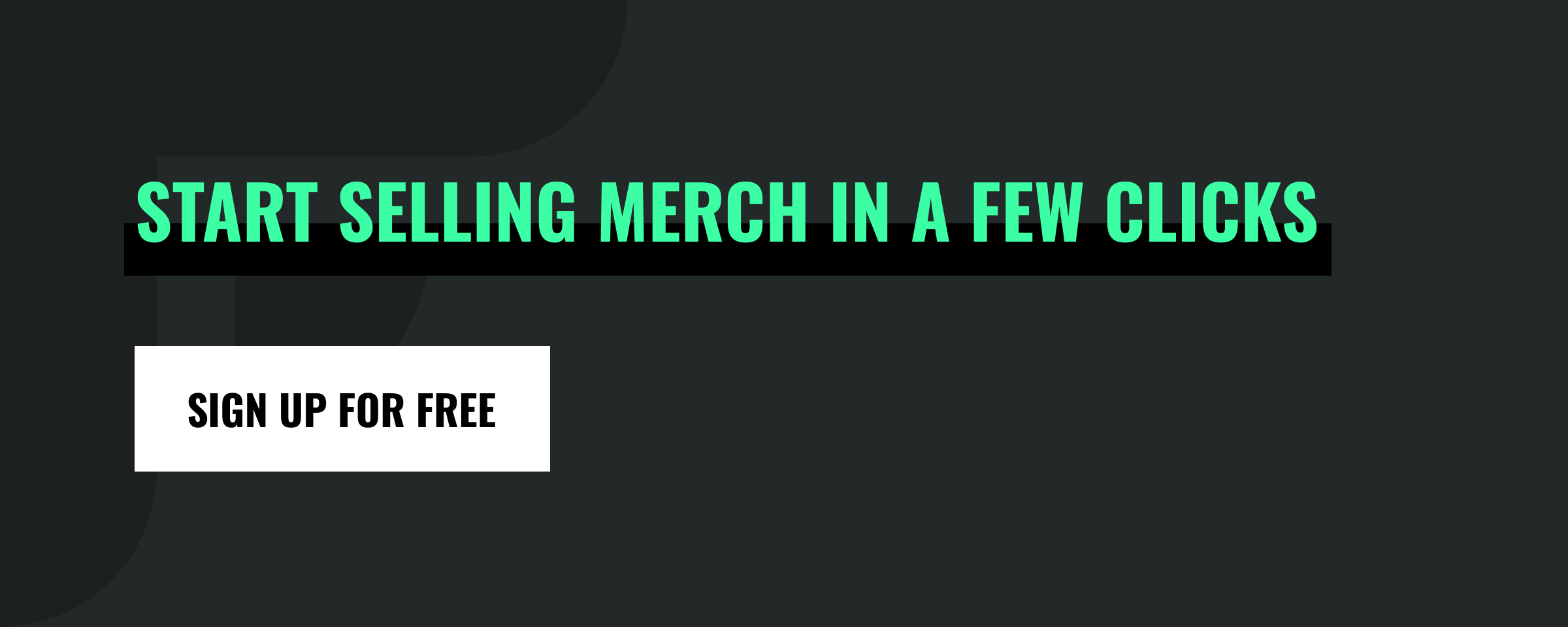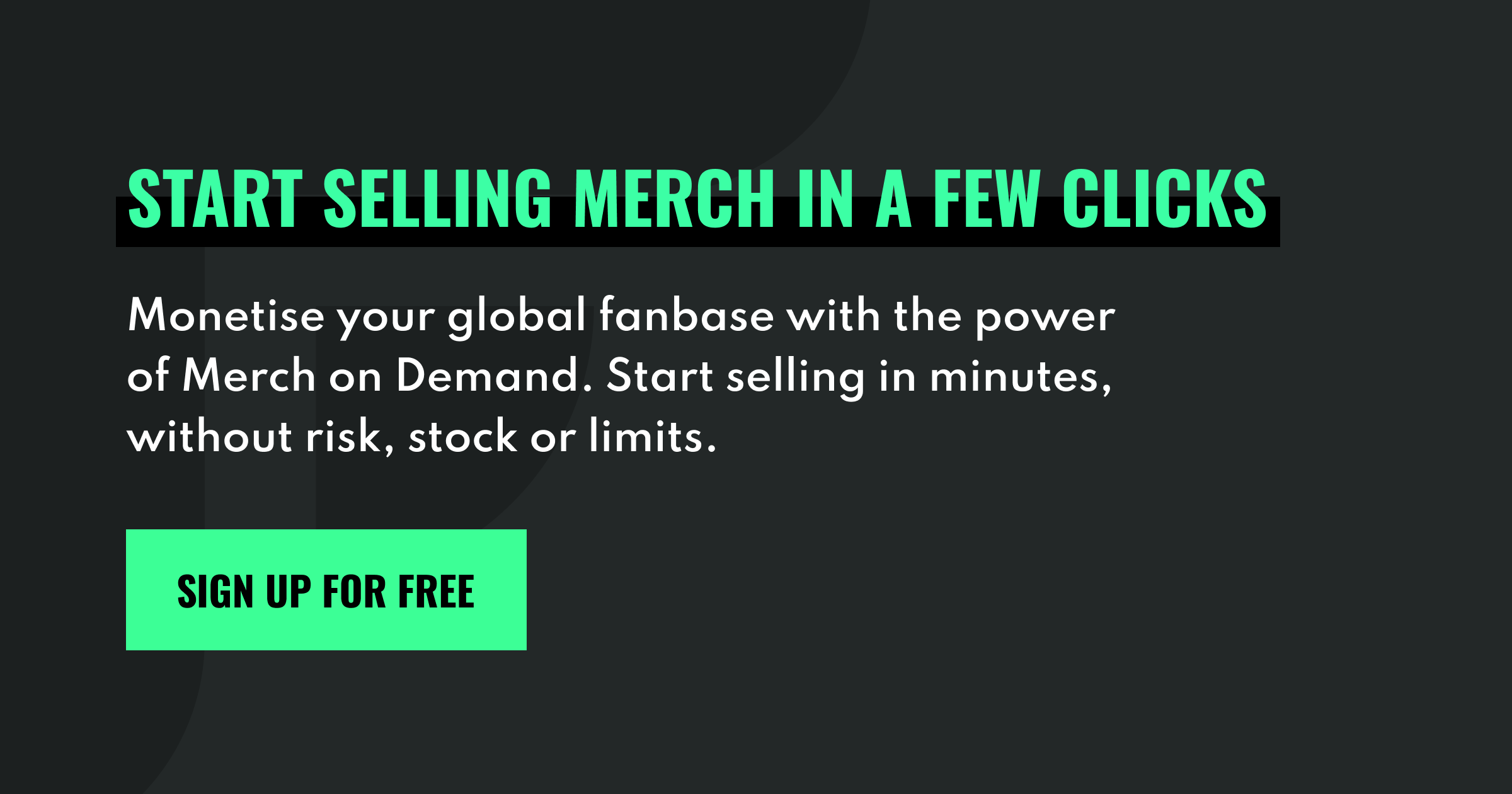It’s a critical yet all too common mistake in music merchandising: sporadic merch drops. You’re launching a new album or going on tour, you dutifully design and sell a few snapbacks or shirts, and figure you’re done.
This is not how you set up a successful merch strategy. If you want to stay relevant to your fans, you’ll need to add new merch regularly. Read on and we’ll show you why this is important and how to get started today.
Where do artists typically go wrong with their merchandising strategies?
First off, let’s get one thing straight: selling merch as an artist should not be difficult. If you play your cards right, use the right tools and adopt the right mindset, that is.
To get you on the right track, here are some common mistakes artists make when they first plan their merchandising strategies – if there’s a plan at all.
1. Only focusing on traditional merch moments
This is probably the most common mistake artists make when it comes to selling merch. Focusing only on things like new album releases or the start of a big tour as reasons to design and sell merch.
But what about the anniversary of your band? Seasonal merch types like hoodies in autumn or shorts in spring? Ignore all these other potential merch moments, and you’re basically ignoring an extra revenue stream.
2. Being out of sight instead of staying top of mind
All (music) marketers know: vying for your audience’s attention is a difficult game to play. Attention spans are short and it’s way too easy to keep scrolling through a social media feed.
Regularly sharing thumb-stopping content is a must if you want to keep occupying your fans’ valuable mental space and stay top of mind.
Don’t let them forget about you. Instead of limiting your social media output to sharing new music, try regularly promoting new merch, as well. It’s another touchpoint with your fans and a great way to build your artist brand.
3. Being fully dependent on the inventory of stocked merch
One of the biggest challenges in setting up a solid merch strategy is also a fictional one. Most artists think releasing a new line of merch products means you need to invest lots of money and pre-purchase these products in bulk. Not true.
With a solution like Fanbace you can start selling merch on demand. Meaning you only pay for merch when it’s actually ordered by one of your fans. Eliminating the need for stock completely. No risk, stock, nor limits involved.
How do you manage your fans’ expectations when it comes to merch?
Apart from avoiding common mistakes musicians make when planning their merch strategies, they should also focus on managing expectations. The more your fans are aware of your merchandising business, the more likely they’ll be to make a purchase.
So how do you manage their expectations and build awareness of your merch businesses existing?
1. Communicate the fact you sell merch, as often as you can
Promotion of anything should never be a one-off. Whether that’s releasing new music, an upcoming tour or being nominated Top Artist in the Billboard Music Awards. If you have cause to celebrate, do so, and do it often.
Merchandise should be no exception. Whenever you’re promoting a new product, make sure you schedule 3-4 follow-ups within 2-3 weeks. This gets your audience used to the fact that they can support you by buying your merch.
2. Build hype well in advance and master the art of the drop
It’s an increasingly common e-commerce marketing strategy, especially in the fashion industry: building hype in advance of a product ‘drop’ (did someone say ‘Supreme’?). Use this marketing strategy to boost your merchandising campaigns.
How this works?
Basically, you try to get your audience hyped up for a new merch release, preferably one that’s very exclusive and limited in numbers. By doing so, you guarantee selling out quickly when the product drops. You can even raise prices significantly.
3. Establish a cadence and rhythm for your merch campaigns
Selling merch off the cuff is one thing. But making sure you have a personal merch promotion calendar offers huge benefits to your business.
Scheduling your merch campaigns in advance helps you keep oversight and remain in control of merch marketing activities.
This also lets you establish a cadence and rhythm your fans can get used to. Consider launching a new piece of merch every month, and do so consistently. At some point your fans will come to expect and even look forward to your monthly merch.
Imagine getting messages from your fans, asking when you’ll be releasing your newest hoodie, sweatshirt or tote bag. How cool would that be?
Stay relevant to fans by adding new merch regularly
All the above can be summarised quite simply: if you want to stay relevant to your fans you have to:
- Focus on more than the traditional merch moments
- Stay top of mind by actively promoting merch on social media
- Sell merch on demand instead of depending on stock
- Communicate about your merch campaigns often
- Build hype with exclusive merch drops promoted well in advance
- Establish a rhythm in your merch campaigns so fans get used to it
In other words: you need to add new merch regularly in order for you to stay relevant to your fans. You should also realise this will massively contribute to your brand as an artist, in the long run.
Every t-shirt, hoodie, or bag you sell means there’s a fan who’ll be walking around in it. This is free advertising for your artist brand. The more merch you sell, the more your brand will grow.
In essence, every day is a merch day. And with a solution like Fanbace’s print on demand merch platform, you’ll be able to ship new merch ideas within minutes of having dreamed them up. Without risk, stock or limits.



